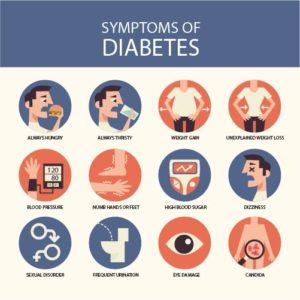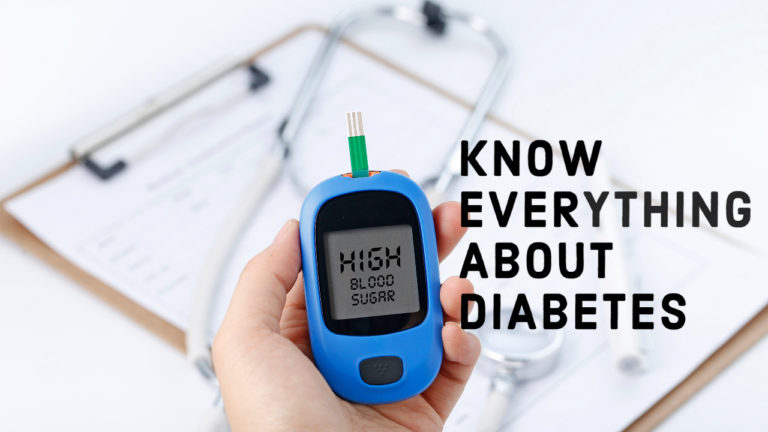Diabetes is of two different types. One is the type one diabetes and another is type 2 diabetes. I am discussing the type 1 diabetes specifically here.
What is type 2 diabetes?

When blood sugar level or glucose levels in the blood becomes too high, the condition is called diabetes.
If this condition arises from birth or appears later I the life as an autoimmune disorder it is considered as type 1 diabetes.
If these conditions are not birth or auto-immune and you do not require insulin from the first day then this is the second type of diabetes.
You already know that any food that you eat gets converted into blood glucose,. Blood glucose is the main energy source of the body.
The pancreas is the gland that produces insulin in our body. Insulin is responsible to convert glucose to energy. This energy is used by the body cells.
This is a cycle of glucose and insulin and it starts from the first minute of our life. But, as the level of glucose increases the body has to produce more insulin to convert it to energy.
If the body is not able to produce enough insulin then glucose remains in the blood and this is the main symptom of Diabetes Type 2.
If your body cells are pumped with insulin time and again they become resistant to insulin. So the body has to produce more insulin to compensate by producing extra.
In type 2 diabetes, the body is not able to make enough insulin or is not able to use it well. In this condition, most glucose stays in the blood and cells do not get the required energy.
There are a few steps that you can take to limit or stop the progress and growth of type 2 diabetes.
Who can be affected by type 2 diabetes?
Type 2 diabetes can develop at any age, even in childhood.
However, mostly middle-aged and older people are more affected. the chances of developing type 2 diabetes are more if you have a family history of diabetes, more than 45 years of age, obese and overweight.
If you are physically less active or have problems like high blood pressure, there are more chances of type 2 diabetes to develop. People with pre-diabetes or pregnant women with gestational diabetes are more likely to be affected.
Symptoms of Diabetes:
Common symptoms of Type 2 diabetes are listed below:
- fatigue
- blurred vision
- frequent urination
- increased thirst and hunger
- abnormal weight loss
- numbness in hands and feet
Some of these symptoms take time to develop, sometimes over a few years that we even fail to notice them. Some people do not have these systems even and some find out when they have some diabetes-related disease.
Factors causing NIDDM diabetes:
Non-Insulin dependent diabetes or NIDDM is the medical terminology for type 2 diabetes.
Causing factors
- genes
- less physical activity
- being overweight and obese
- resistance to insulin
- Economic stress.
How is type 2 diabetes be diagnosed?
It can be diagnosed based on your blood test report. You can take the help of your health care professional for these tests. You may be diagnosed with diabetes if the blood sugar level is more than 125 when fasting or more than 200 randomly.
How can type 2 diabetes be managed?
To manage it, you will have to manage and control important factors like blood glucose, cholesterol, and blood pressure. You should try to quit smoking if you smoke.
Make healthy lifestyle changes like switching to healthy meals, limit your calorie intake, and start some physical activity with prescribed medicines will help control diabetes. Take the help of your life care professional to make a diabetes care plan for you.
Medicines you need to treat type 2 diabetes:
Apart from a healthy diet plan, you may need medicines like pills or insulin injections to inject in your skin directly. In some cases, you may require more than one medicine for diabetes.
You may even require to take insulin at special times like pregnancy or while any hospital treatment. along with the medicine for diabetes, you may need to take medicines for your other conditions like hypertension, high cholesterol, etc.
Other problems
If diabetes is not taken care of then there can be many other associated health problems. Some of the problems are:
- stroke
- nerve damage
- kidney problems
- heart-related problems
- vision-related problems
- sexual problems
Some people also develop a problem called nonalcoholic fatty liver disease, if they are overweight or obese. Diabetes can be also responsible for problems like depression, sleep apnea, and dementia.
In case of any kind of diabetes, people will need to monitor the blood sugar levels frequently to avoid hyperglycemia or hypoglycemia.
How to lower the chances of type 2 diabetes?
There are several steps that you can take to reduce the chances of developing NIDDM. If you already have the risk factors, below are the things that you can do:
- Try to lose weight if obese: if you are overweight or obese, you can delay diabetes by losing some extra weight.
To quote an example here if you weigh about 100 kg currently, try losing 5 to 7 kg of your weight. - More movement: 30 minutes of any physical activity like walking is a good exercise to keep diabetes away. If you do not follow an active lifestyle, you can get help from your healthcare professional about the exercises that you can do.
- Take a healthy diet: Reduce the calorie intake by eating smaller portions to lose weight. Most of the doctors recommend food with less fat.
But, new researches have found that a fat-based diet or keto diet can prove to be highly beneficial for patients. We have discussed this in many more articles on this website. Prefer water over sweetened beverages as they increase risk by 26%-67%.
Your health care professional can guide with more changes that you may need to make to prevent or slow down type 2 diabetes.

